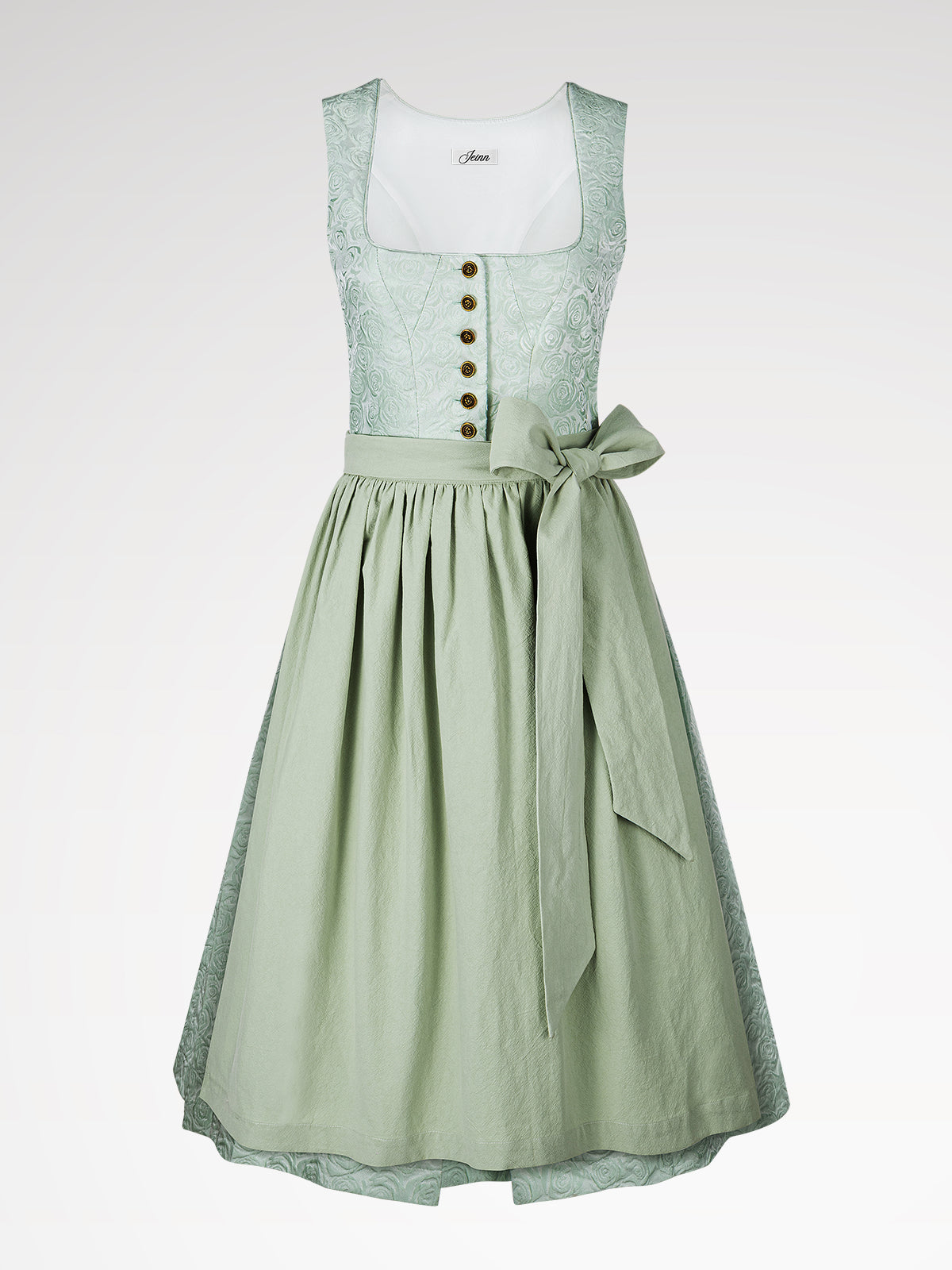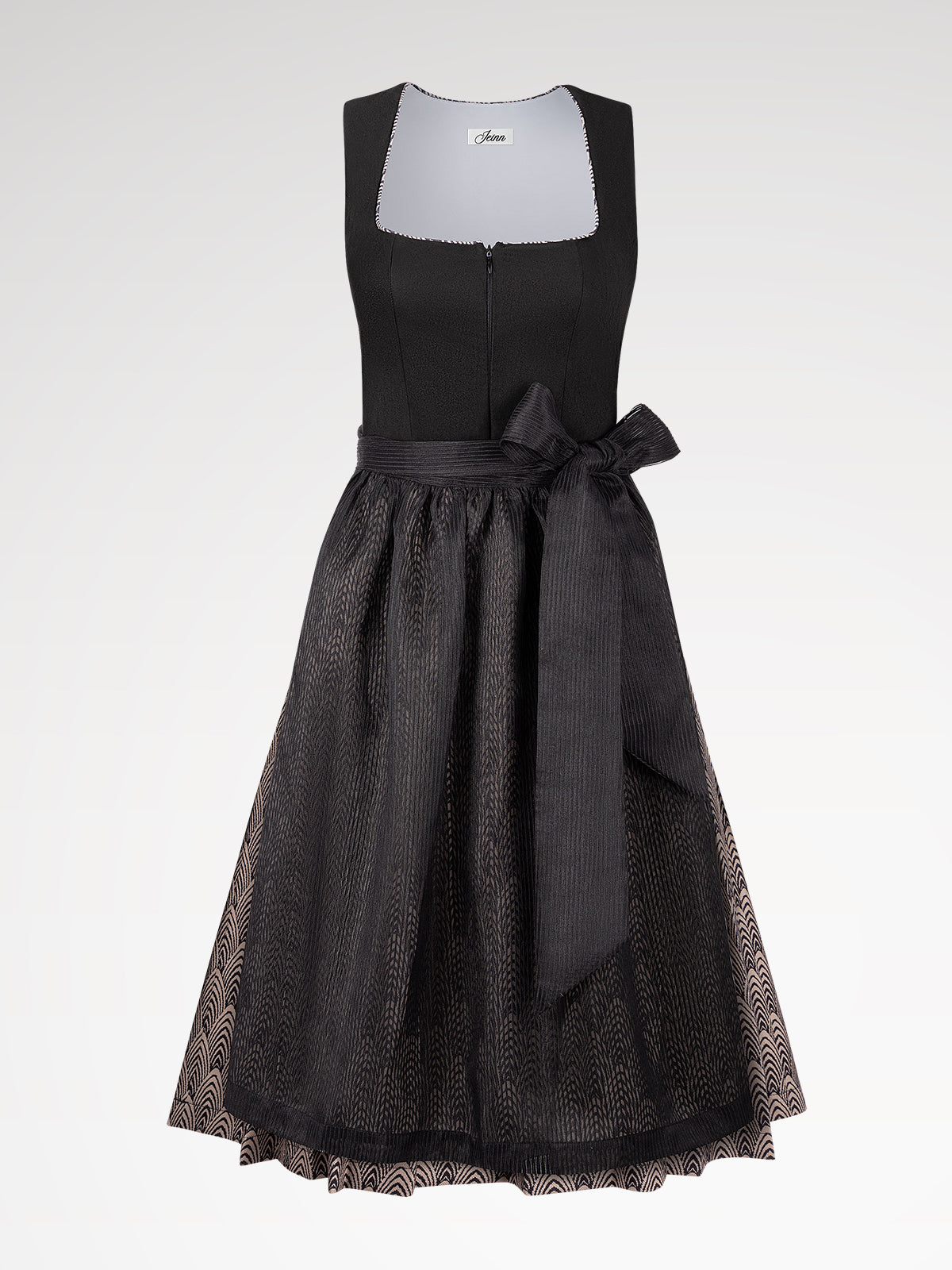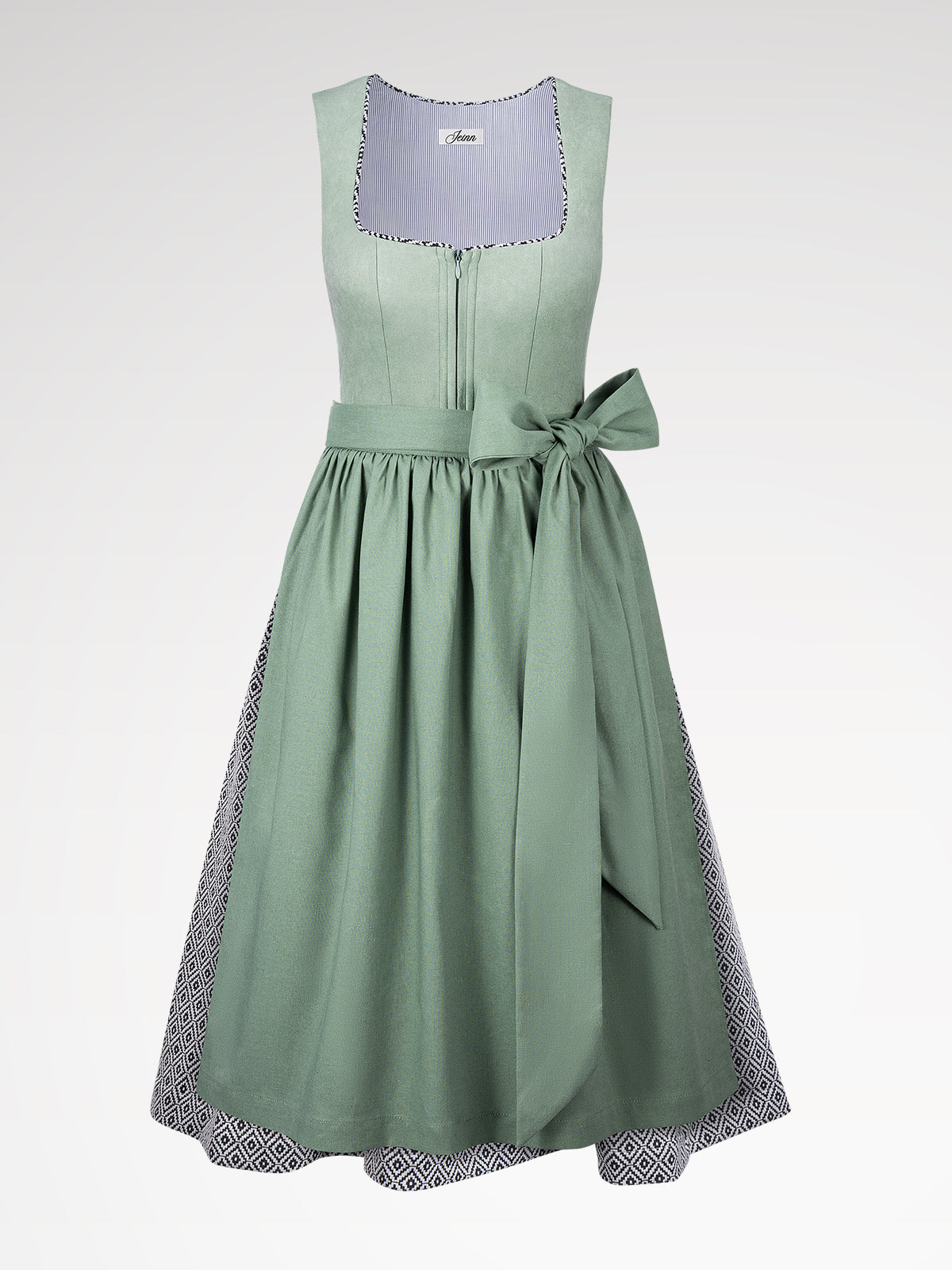Bavarian Dirndl: Classic in dark green and navy blue
The Bavarian dirndl (70cm) is a symbol of tradition and down-to-earthness. It typically consists of a dark top—usually available in dirndl 70cm sale—combined with a white blouse and a full skirt. The cut is simple yet elegant, with a tight-fitting bodice and a gathered skirt that reaches to the ankles.
The dirndl 70cm in Bavaria, as it not only looks traditional but is also practical: the long skirt protects against wind and weather, while the bodice accentuates the figure.
But why does the 70 cm dirndl dominate in Bavaria? The answer lies in history: In the past, the dirndl was the workwear of farmers' wives, and dark colors concealed stains better. Today, the 70 cm dirndl is a symbol of regional pride and is especially popular at folk festivals like Oktoberfest.
Austrian Dirndl: Romance in red and green
In Austria, however, the dirndl has developed in a different direction. While the Bavarian dirndl (70cm) is rather dark and simple, in Austria, vibrant colors are preferred—especially the red-green dirndl.
Another characteristic feature of the Austrian dirndl is the fine embroidery—often with rose motifs—and the leather-trimmed belt that accentuates the waist. The cut is often slightly wider than its Bavarian counterpart, which gives the whole outfit a playful touch.
But here comes the first surprise: While people in Bavaria think that the dirndl 70 cm sale While the traditional Austrian costume is the only true traditional dress, there are regions in Austria where the red-green dirndl is even adorned with fur trim or gold buttons. This creative freedom makes Austrian traditional costume so unique.
Materials and cuts: Dark green vs. red and green
Another significant difference lies in the materials and colors. The Bavarian dirndl 70cm is usually made of thick velvet or wool in dark colors, while the Austrian red green dirndl often made of lighter fabric decorated with fine embroidery.
The cut also plays a major role: The Bavarian dirndl has a more conservative cut, with a high collar and long sleeves. The Austrian model, on the other hand, often has lower necklines and shorter sleeves, giving it a more modern touch.
But here comes the second surprise: In some Bavarian villages, there are young designers who combine the 70cm dirndl with modern elements—such as transparent blouses or asymmetrical aprons. Thus, the tradition lives on, even if it is changing.
Accessories: apron, hood and more
Another important aspect is the choice of accessories. In Bavaria, the apron is essential—and its knot reveals a lot about the wearer's marital status. In Austria, however, the apron is often more decorative, with ruffles or floral embroidery.
The cap also plays a role: in Bavaria it is usually made of white linen and tied tightly, while in Austria small, playful caps with ruffles are often worn.
But here comes the third surprise: In some regions of Austria, the dirndl is even worn without a hood – a radical deviation from the traditional Bavarian norm.





Leave a comment
This site is protected by hCaptcha and the hCaptcha Privacy Policy and Terms of Service apply.